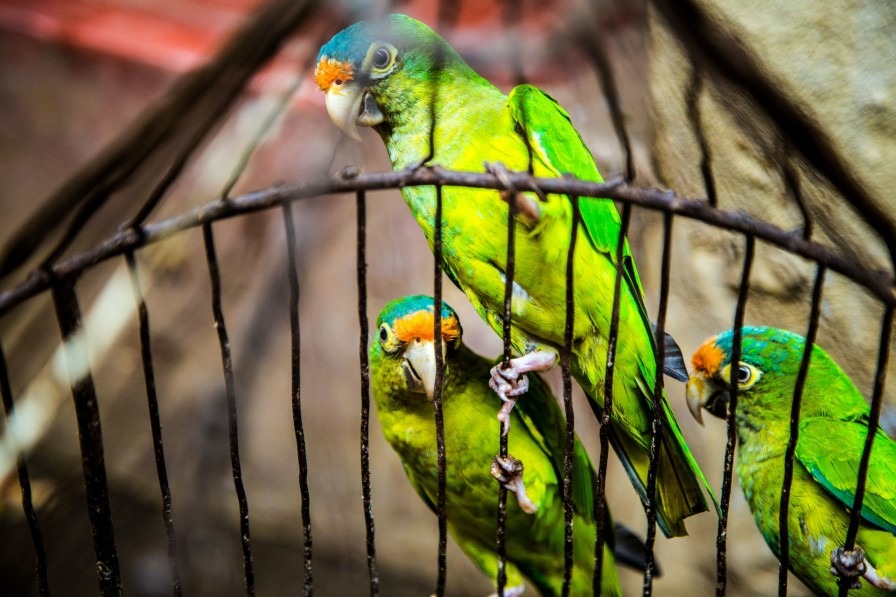Uncaging the Birds: How we can use environment to unlock creativity within music workshops

As humans we are constantly responding to our physical and mental environment. Every environment has a different impact on the human being and offers different vibrations for us to respond to. We all desire a safe environment to create in and the children we work with are no different. It is massively important to realise the ingredients that make this so we can engineer our workshop environment when we need to – and our presence, as well as the physical environment, is key.
With one group during the Voices and Choices project we have been exploring the forest environment – but without going to the forest itself. For some children, this transformation of space (using full ceiling moving projections, lower lighting, planned instrument positioning, the addition of plants into the space, pine perfumes and the introduction of natural materials to make sounds) has enabled them to access music in a way they haven’t been able to before. This transition was gentle and added on week by week, so as not to disrupt a familiar space.. One child with severe learning needs attends the sessions every week but normally runs around, finding it difficult to settle and play any instrument. On the week we introduced the projections she settled completely watching the video – a little way into the workshop we looked over and she was bowing the cello without help and prompting, making music without hesitation, perhaps for the first time. We didn’t do it – she did it. This highlighted the importance of the environment within workshops – for this participant, we found the key and it’s important to note that that key wasn’t initially through music. Doing something different can sometimes provoke surprise reactions – in a good way!
Would it have been productive to do this workshop directly in the forest for this participant? We don’t think so. Being around nature can be transformative but the practicality of the forest blanketing sound and resonance (and the sensory overload it may bring in general for our participants), would make the space less appropriate as a workshop environment. However, bringing the forest to the room to unlock the creative potential of our participants worked beautifully. The trigger of a creative environment enabled deeper work to be done.
It’s not just the transformation of space that can help in regard to the environment. For example, using a pop shield whilst recording vocals gives a ‘barrier’ between the young person and the practitioner and that imagined distancing makes the young person feel more comfortable to share (like the theory that we chat better as humans whilst walking side by side, rather than sitting face to face)
As practitioners, we realise we need to pay as much attention to setting up the space as what we are doing with the planning of the session. In a separate sense, creating a mental space that is safe to come into too also breaks down the fight or flight response some of our participants may experience when accessing music too. One cannot feel safe without the other. Sometimes it is what you don’t do that matters most – not stopping children from playing their instrument freely, for example. Sometimes this can come down to the personal ‘chemistry’ of the practitioner and participant – we have developed a strong network so that we can make sure the participants we have are working with the best practitioner for them. We want to be a safe and predictable part of the furniture.
Authority over the environment is another way we can use the setting of a workshop to benefit the participants’ creativity – the ‘right’ environment is different for every person. The child being able to control the level of noise is particularly essential (and to be responsive to other children in the room too). Sometimes the sensory impact of a big sound, such as the bashing of the drums, is cathartic to some children but to others is utterly overwhelming. This isn’t a ‘one size fits all’ scenario. We all like control over our environment, and being able to control the sound around us is a relief (music can be detrimental to our health as well as a benefit) – children should be able to shape an environment that works best for them too. This also can make young people feel important.
The balance of the above factors in regard to the workshop environment give children and young people participating an opportunity to drop their walls and start to listen to their natural musical instincts without their flight or flight being triggered – if you will, uncage the bird inside.
TAKEN FROM A CPD DISCUSSION LED BY CEZARY FLAK AND THE WHOLE VOICES AND CHOICES TEAM
